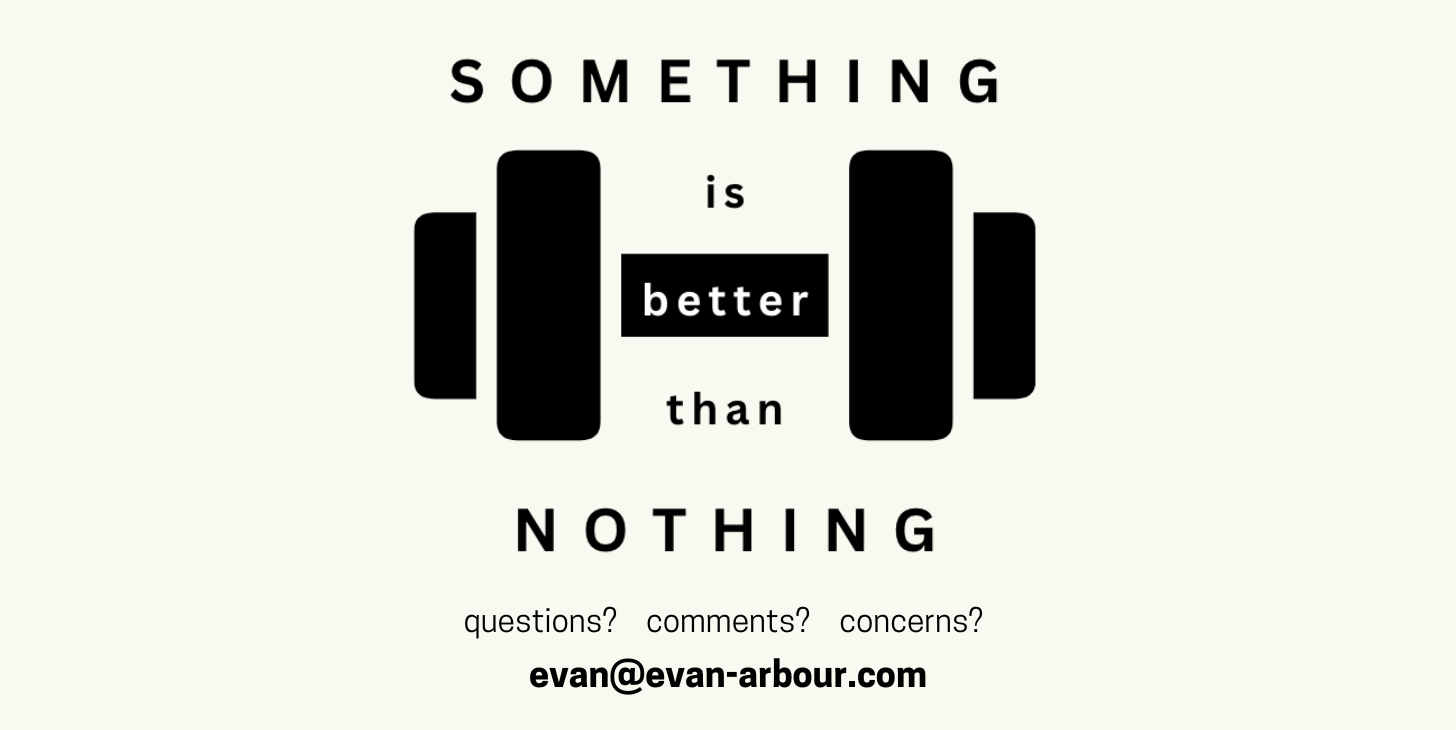Implementing Progressive Overload
Learn how hard to push your training and get stronger for it.
If you’re reading this and happen to not yet be subscribed, let me help you with that:
Our muscles grow and strengthen as a response to training stimulus – read more about that here. So why can’t we just use the same weights, the same workout, the same number of reps each time we’re in the gym? Because our bodies are incredibly good at adapting.
It is a biological, evolutionary protection. Your body says: “if we’re surviving, why would I put resources into building muscle if we might need that energy later? No thanks. I feel comfortable here.” The human body will not change unless it is FORCED TO DO SO. If you don’t continually push your muscles past what they’re accustomed to doing, your body won’t send the signal to kickstart hypertrophy.
That’s why you cannot grow complacent in your training. If you aren’t gradually increasing the demand on your muscles – a training principle called progressive overload – you’ll plateau.
Progressive overload is defined as “continually increasing the demands on the musculoskeletal system in order to make further gains in muscle size, strength, and endurance.”
In other words, if you want to get bigger and stronger you’ll have to continually push your muscles to work harder than they’re used to.
On the flip side, if the work you do on your muscles decreases or isn’t at least maintained, your muscle will atrophy, or lose size and strength. (Side note: studies show that building the muscle initially is way harder than getting it back after it’s lost).
Methods of Progression:
INCREASE OF LOAD
Most often, when implementing progressive overload, that means increasing load – the weight on the bar or size of the dumbbells. But how much do we increase? My rule of thumb is this:
UPPER BODY DRILLS: 2.5-5 pound increase
LOWER BODY DRILLS: 5-10 pound increase
The lower end progressions are more moderate and the upper end are more intense. The upper body muscles tend to respond better with smaller increases in load when progressing at the gym, which is why I suggest smaller adaptations.
FORM
Form comes first. Don’t even think about grabbing heavier load until you are confident in your ability to perform the drill well. Look up videos online, record yourself and compare. Ask questions: my email is below! Working on your form and executing a drill more efficiently and confidently is a huge progression! You’ll be working the targeted muscles more effectively by activating those muscle fibers directly.
MORE REPETITIONS
Progressive overload can mean doing more reps with the same weight. Even ONE more rep from week to week is pushing your muscles past what they’ve done before. Small increases of demand add up.
BIGGER RANGE OF MOTION
Increasing your range of motion of a certain drill with the same weight is an incredible form of progression. It causes the muscle fibers to experience tension under load through a larger range which causes more activation.
INCREASE NUMBER OF ‘HARD SETS’
What is considered a ‘hard set?’ Let’s say for our example, you are planning to do 3 sets of 8 reps each – written as “3 x 8” – of dumbbell goblet squats. A ‘hard set’ is considered any set that is taken to 1-3 reps before failure (failure meaning you can’t complete another rep with good form). For our example:
Week 1:
Set 1: felt pretty comfortable
Set 2: somewhat hard
Set 3: hard - really had to push to get your eighth rep
Week 2:
You’d come back to your squats with the plan to complete another set like Set 3 from Week 1 with the same weight, same reps - making it 4 x 8.
Set 1: comfortable
Set 2: somewhat hard
Set 3: hard
Set 4: very hard - your progression!
You might be asking: Why not just keep the 3 sets and take each of them to failure instead? That sounds hard! And hard is good for muscle growth, right?
Training to failure all the time isn’t necessary. Taking your sets to near-failure, 1-3 reps before, has been shown to cause as much growth as failure. Additionally, going to failure regularly is more fatiguing and it can negatively impact the rest of your training session. There also is a higher injury risk when training to failure as the strain on your muscles and the supporting structures is so high. You get just as much growth without the risk by stopping a few reps shy – it’s a win win.
Rate of Perceived Exertion (RPE) is effective method to estimate how close you are to failure. It’s a scale from 1-10 describing how ‘hard’ the set feels.
Looking back at our example for Week 2 in terms of RPE:
Set 1: RPE 5 (comfortable)
Set 2: RPE 7 (somewhat hard)
Set 3: RPE 8 (hard)
Set 4: RPE 9 (very hard)
Most of your training should be done within the 7-9 RPE range.
This ensures you are pushing your sets hard enough to force your muscles to adapt.
Note: If you are newer to resistance training, it’s difficult to gauge your effort accurately because you’re learning how your body responds to the work! It’s a skill that takes time and experience to implement. Training to failure at times can be useful in this instance to experience just how far you can push yourself and better understand RPE.
As you get stronger and more experienced, what felt like a 8 RPE a couple weeks ago will feel more like a 6 RPE. You’re ready for progression! But what exercises should you be executing and progressing to maximize your time at the gym?
Read post #3 of the 6-part Essentials Education of Strength Training: The 6 Fundamental Movement Patterns.






this one I am printing out. thanks for helping bring to light how to level up, in a safe mindful way.
Love this guide! Working out alone I either likely pushed too hard to failure, or not enough to see progress. This is so helpful to think about how each rep should feel.